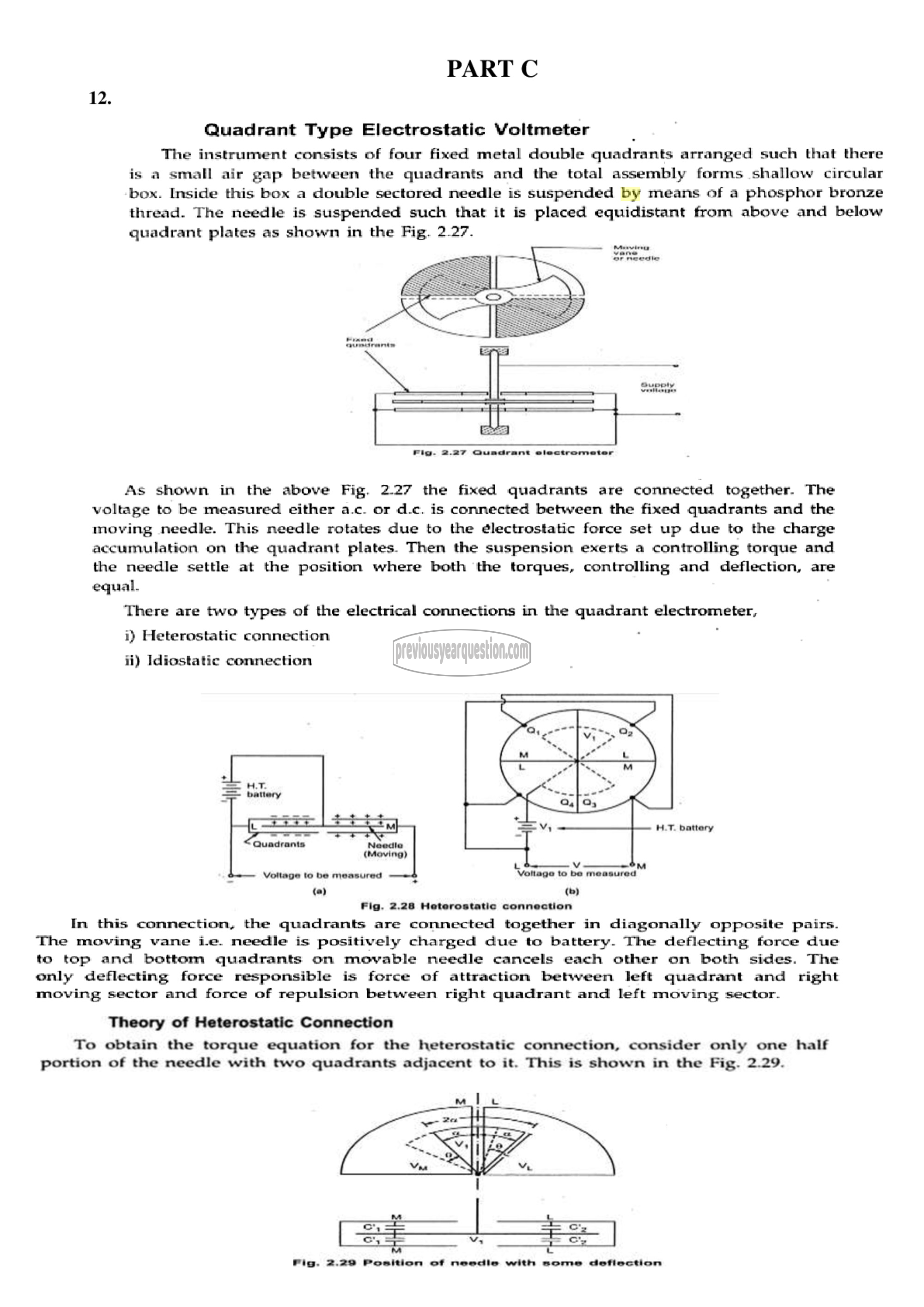APJ ABDUL KALAM TECHNOLOGICAL UNIVERSITY Previous Years Question Paper & Answer
Semester : SEMESTER 4
Subject : Measurements and Instrumentation
Year : 2018
Term : MARCH
Scheme : 2015 Full Time
Course Code : EE 208
Page:14
12.
PART C
Quadrant Type Electrostatic Voltmeter
The instrument consists of four fixed metal double quadrants arranged such that there
is a small air gap between the quadrants and the total assembly forms shallow circular
box. Inside this box a double sectored needle is suspended by means of a phosphor bronze
thread. The needle is suspended such that it is placed equidistant from above and below
quadrant plates as shown in the Fig. 2.27.
പിട
vane
27 > ری
ങ്,
Fig. 2.27 Quadrant electrometer
As shown in the above Fig. 2.27 the fixed quadrants are connected together. The
voltage to be measured either a.c. or d.c. is connected between the fixed quadrants and the
moving needle. This needle rotates due to the ¢lectrostatic force set up due to the charge
accumulation on the quadrant plates. Then the suspension exerts a controlling torque and
the needle settle at the position where both the torques, controlling and deflection, are
equal.
There are two types of the electrical connections in the quadrant electrometer,
i) Heterostatic connection ⋅
ii) Idiostatic connection
ಮ rants [
(Moving)
ட v———°m
Voltage to be measured Voltage to be measured
= +
(4) (ಐ)
Fig. 2.28 Heterostatic connection
In this connection, the quadrants are connected together in diagonally opposite pairs.
The moving vane i.e. needle is positively charged due to battery. The deflecting force due
to top and bottom quadrants on movable needle cancels each other on both sides. The
only deflecting force responsible is force of attraction between left quadrant and right
moving sector and force of repulsion between right quadrant and left moving sector.
Theory of Heterostatic Connection
To obtain the torque equation for the heterostatic connection, consider only one half
portion of the needle with two quadrants adjacent to it. This is shown in the Fig. 2.29.
Pig. 2.29 Position of needle with some doefiection
